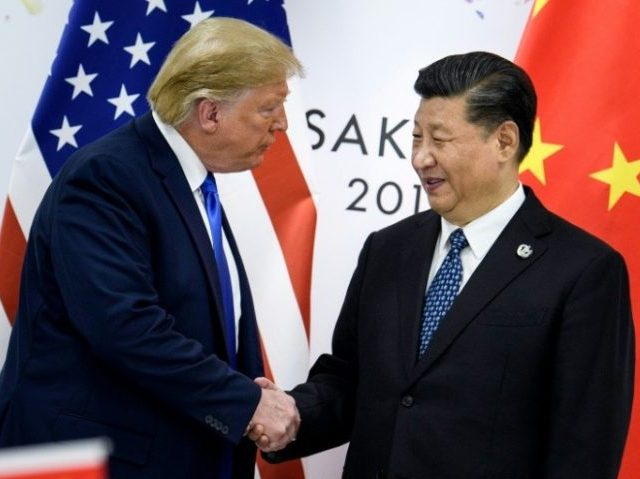President Donald Trump announced that the U.S. had reached a “Phase One” trade deal with China that included “massive” purchases of U.S. products and a reduction in some U.S. tariffs on Chinese imports.
The president, however, did not specify a dollar amount for the Chinese purchases of U.S. products. At a press conference in Beijing, Chinese officials confirmed that an agreement was reached but the officials were vague about what the agreement entailed and declined to specify what they would purchase.
President Trump’s tweet appeared to indicate that the U.S. would cut in half the 15 percent tariff on around $120 billion of Chinese goods that was implemented in September. A statement from the U.S. Trade Representative Friday morning clarified that that this was the case and that the $25 percent tariffs on other Chinese goods would remain in place.
Earlier reports indicated that the U.S. would reduce a broader range of tariffs, perhaps halving all of the current tariffs. In a tweet on Friday, Trump said a report about the deal from the Wall Street Journal was wrong.
The Wall Street Journal had reported:
Michael Pillsbury, an adviser to the president, said he spoke with Mr. Trump, who said the deal calls for China to buy $50 billion worth of agricultural goods in 2020, along with energy and other goods. In exchange the U.S. would reduce the tariff rate on many Chinese imports, which now ranges from 15% to 25%.
The Wall Street Journal reported earlier Thursday that the U.S. side has offered to slash existing tariff rates by half on roughly $360 billion in Chinese-made goods, in addition to canceling the tariffs on $156 billion in goods that Mr. Trump had threatened to impose on Sunday. That offer was made to Beijing in the past five days or so.
Although a deal was reportedly agreed to on Thursday, President Trump waited to comment on the deal until China announced it on Friday morning. China’s announcement, however, was surprisingly vague about details and is already leading many to question whether their really has been a meeting of the minds with the U.S.
The U.S. Trade Representative on Friday morning described the “Phase One” trade deal as “historic and enforceable.”
The United States and China have reached an historic and enforceable agreement on a Phase One trade deal that requires structural reforms and other changes to China’s economic and trade regime in the areas of intellectual property, technology transfer, agriculture, financial services, and currency and foreign exchange. The Phase One agreement also includes a commitment by China that it will make substantial additional purchases of U.S. goods and services in the coming years. Importantly, the agreement establishes a strong dispute resolution system that ensures prompt and effective implementation and enforcement. The United States has agreed to modify its Section 301 tariff actions in a significant way.
“President Trump has focused on concluding a Phase One agreement that achieves meaningful, fully-enforceable structural changes and begins rebalancing the U.S.-China trade relationship. This unprecedented agreement accomplishes those very significant goals and would not have been possible without the President’s strong leadership,” said United States Trade Representative Robert Lighthizer.
“Today’s announcement of a Phase One agreement with China is another significant step forward in advancing President Trump’s economic agenda. Thanks to the President’s leadership, this landmark agreement marks critical progress toward a more balanced trade relationship and a more level playing field for American workers and companies,” said Secretary of the Treasury Steven Mnuchin.
The United States first imposed tariffs on imports from China based on the findings of the Section 301 investigation on China’s acts, policies, and practices related to technology transfer, intellectual property, and innovation. The United States will be maintaining 25 percent tariffs on approximately $250 billion of Chinese imports, along with 7.5 percent tariffs on approximately $120 billion of Chinese imports.

COMMENTS
Please let us know if you're having issues with commenting.